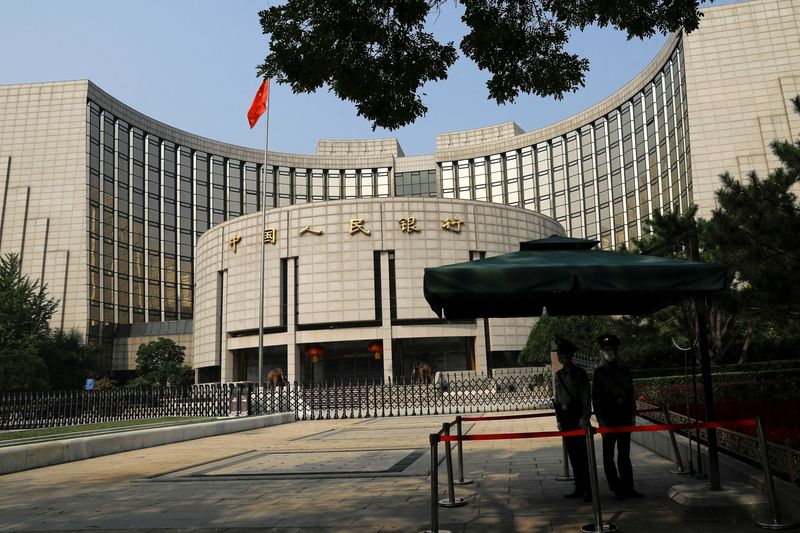Investing.com’s stocks of the week
SHANGHAI/SINGAPORE (Reuters) -China kept benchmark lending rates unchanged at their monthly fixing on Monday, matching expectations with Beijing seen as having limited scope for monetary easing amid downward pressure on the yuan.
The decision came after the People's Bank of China (PBOC) surprised markets last week by holding its medium-term lending facility rate steady.
The central bank has stood pat despite recent data underscoring the uneven nature of China's economic recovery and deflationary pressures pushing up real borrowing costs.
Julian Evans-Pritchard, head of China economics at Capital Economics said policymakers "appear to harbour lingering concerns" about the yuan.
"A cut at this stage could trigger additional depreciation pressure, something the PBOC wants to avoid. Therefore, it may stick to quantitative easing tools for now," he said, citing pledged supplementary lending as an example.
The one-year loan prime rate (LPR) was kept at 3.45%, and the five-year LPR was unchanged at 4.20%. In a Reuters poll of 27 market watchers last week, all but one participant predicted both LPRs would stay unchanged.
Most new and outstanding loans in China are based on the one-year LPR, while the five-year rate influences the pricing of mortgages.
Downward pressure on China's yuan resurfaced in the new year, weighed down by a dollar buoyant on signs of resilience in the U.S. economy and caution that the Federal Reserve may take longer than some had expected to cut rates.
The onshore yuan has lost about 1.3% for the year to date, hitting its weakest level in two months.
Evans-Pritchard said he expects the PBOC to resume rate cuts as soon as the yuan regains some ground, forecasting 20 basis points in rate reductions by the end of the second quarter.
The one-year LPR was cut twice last year by a total of 20 basis points, while the five-year LPR was lowered by 10 basis points.
Market watchers also expect the central bank to ramp up liquidity injections before the upcoming Lunar New Year holidays, when cash demand from corporates and households usually picks up.
The PBOC is expected to employ methods such as reverse repos in open market operations, the state-owned China Securities Journal cited analysts as saying on Monday, adding that chances of a reduction in banks' reserve requirement ratio (RRR) could also not be ruled out.
The week-long holiday starts on Feb. 10 this year.
